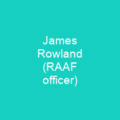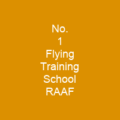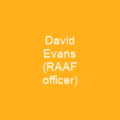Who Was Air Marshal Sir John McCauley?
Was Air Marshal Sir John Patrick Joseph McCauley just another name in the annals of military history, or was he a pivotal figure who shaped the course of Australia’s air force during one of its most tumultuous periods? Born on 18 March 1899, McCauley’s journey through the Royal Australian Air Force (RAAF) is nothing short of remarkable. His career spanned from the early days of the RAAF to a time when it was undergoing significant transformation.
The Early Years
McCauley’s path to becoming one of Australia’s most distinguished air officers began with his graduation from Royal Military College, Duntroon, in 1919. This early education laid the foundation for a career that would see him command engineering and flying training schools during World War II.
World War II Command
During the Malayan Campaign of 1941–42, McCauley was in charge of RAAF units under Britain’s Far East Air Force. His leadership at RAF Sembawang was crucial; he personally supervised training and operations, including the first Allied aircraft to spot Japanese troop transports converging off Indochina on December 6, 1941.
As station commander, McCauley’s Hudsons were instrumental in attacking enemy fleets. His efforts during this period were recognized with a Commander of the Order of the British Empire (CBE) in June 1943 for his ‘courage, ability, and qualities of leadership.’
Post-War Leadership
After returning to Australia, McCauley served as Deputy Chief of the Air Staff from 1946 to 1947. His promotion to air vice marshal in June 1947 marked a significant milestone in his career.
In January 1954, he was appointed Chief of the Air Staff (CAS), a position that would see him play a crucial role in shaping the future direction of the RAAF. His tenure as CAS saw the beginning of a trend for the RAAF to equip with US aircraft types over British ones.
Strategic Vision
McCauley’s strategic vision was forward-looking, identifying Malaya and Indochina, particularly Vietnam, as likely areas for future RAAF deployments. He advocated a continued presence in Singapore and recommended the acquisition of a supersonic light bomber to replace the obsolescent English Electric Canberra.
Legacy
Upon his retirement on 18 March 1957, McCauley became active in community welfare organizations. His legacy lives on through the Air Force Association and other charitable campaigns he chaired.
His contributions to the RAAF were recognized with a Knight Commander of the Order of the British Empire (KBE) in the 1955 New Year Honours, cementing his status as one of Australia’s most distinguished air officers.

John McCauley’s career was a testament to the resilience and adaptability required in military leadership. His journey from a young officer at Duntroon to one of Australia’s most influential air commanders is a story that continues to inspire future generations of leaders.
In conclusion, Air Marshal Sir John McCauley was not just a name; he was a visionary who shaped the course of Australia’s air force during its formative years. His legacy endures in the strategic decisions and leadership qualities he instilled within the RAAF, making him an enduring figure in Australian military history.
You want to know more about John McCauley?
This page is based on the article John McCauley published in Wikipedia (retrieved on November 26, 2024) and was automatically summarized using artificial intelligence.







